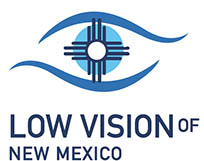
January is Glaucoma Awareness Month, a timely reminder to get your eyes checked!
At least 3 million Americans have glaucoma, and of them, an astonishing 50% don’t even know they have it! In 95% of cases, glaucoma shows no symptoms in its early stages, and by the time symptoms appear, lost vision cannot be restored.
This is why the most effective way not to be blindsided by glaucoma is to undergo regular annual eye exams — even if you think your vision is perfect. If you are diagnosed with glaucoma, a low vision optometrist can provide you with the vision aids and strategies to help you maximize your vision for a heightened quality of life.
What Is Glaucoma?
Glaucoma is a build up of pressure within the eye that causes damage to the optic nerve. The longer the pressure builds, the more damage it causes. Eventually, the nerve will deteriorate to the point of no return, resulting in permanent vision loss or blindness.
How Is Glaucoma Detected?
Early detection is key with glaucoma. Seeing your eye doctor at least once a year for a comprehensive exam is absolutely necessary to avoid vision loss or blindness. During your exam, your doctor will test your eye pressure, examine your optic nerve, and assess your visual field, among other things.
There are several ways to test for glaucoma.
- Air Puff Test - The puff of air is used to gently reflect off the front of your eye. The machine then calculates how much resistance your eye had to the air blast. This will let your doctor know the amount of pressure inside your eyes.
- Tonometer - The pressure in the eye is measured by testing resistance, using a small device that gently touches your eye. Your eyes will be numbed with drops, so you won’t feel this light touch.
- Blue Light Test (Goldmann tonometry) - Your eye doctor will first place numbing drops into your eyes. Then your doctor will use a device called a slit lamp biomicroscope, which slowly moves a flat-tipped probe until it gently touches your cornea. This method is considered the gold-standard for measuring eye pressure. That said, the other two methods are widely used, as they are both comfortable and accurate.
If glaucoma is detected early enough, it can usually be managed to prevent more acute vision loss or blindness. Once vision loss becomes clearly noticeable, it means that the disease has progressed and has entered its advanced stages. At this point, any vision loss incurred is permanent. Fortunately, a low vision optometrist can help manage the condition so you can live your best life.
A Low Vision Optometrist Can Help Manage Glaucoma
If you or a loved one has been diagnosed with glaucoma, a low vision doctor can help by offering a variety of high and low tech products to help these patients see more clearly. In fact, the vast majority of patients we fit with custom optics or other low vision devices experience a profound improvement in their day to day life. If you've experienced vision loss, the sooner you begin to use low vision aids, the quicker you will adjust and learn new ways of retaining your “normal” lifestyle and activities.
While we help manage the condition, it's critical to have it diagnosed early on for optimal results. And the only way not to be caught blindsided is to receive an early diagnosis through your annual comprehensive eye exam. Protect your sight and schedule your annual eye exam with Low Vision of New Mexico today.
Low Vision of New Mexico serves patients from Albuquerque, Santa Fe, Las Cruces, Los Alamos, and throughout New Mexico.
